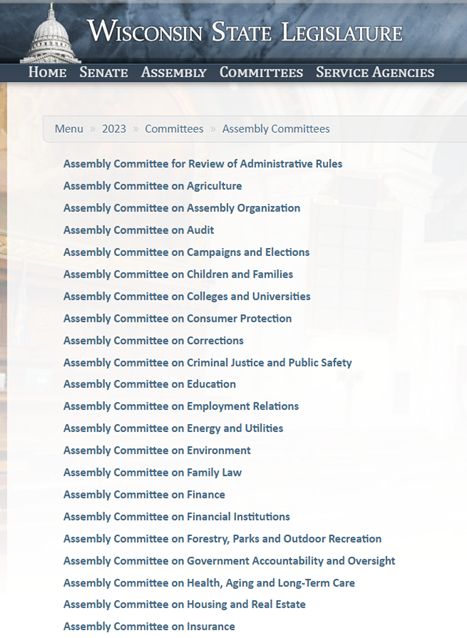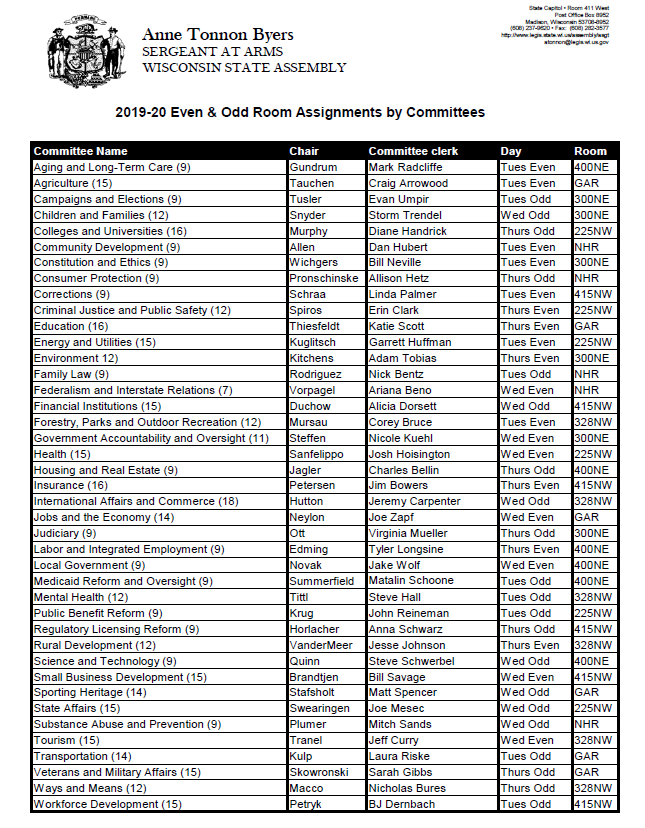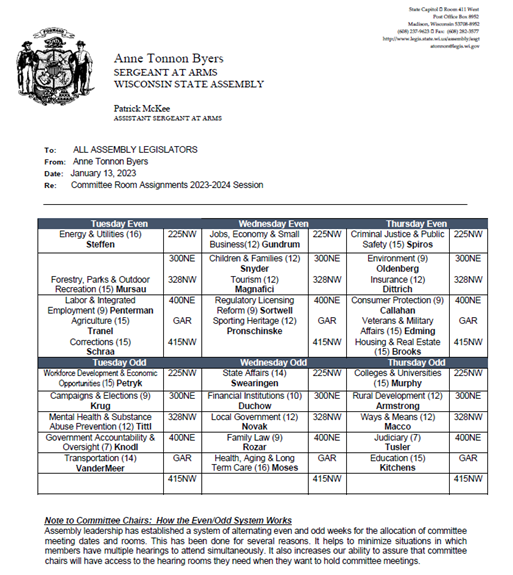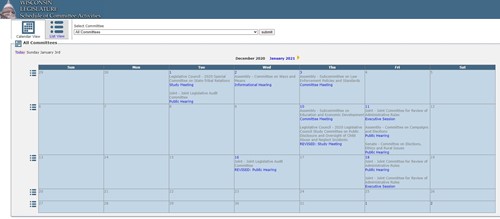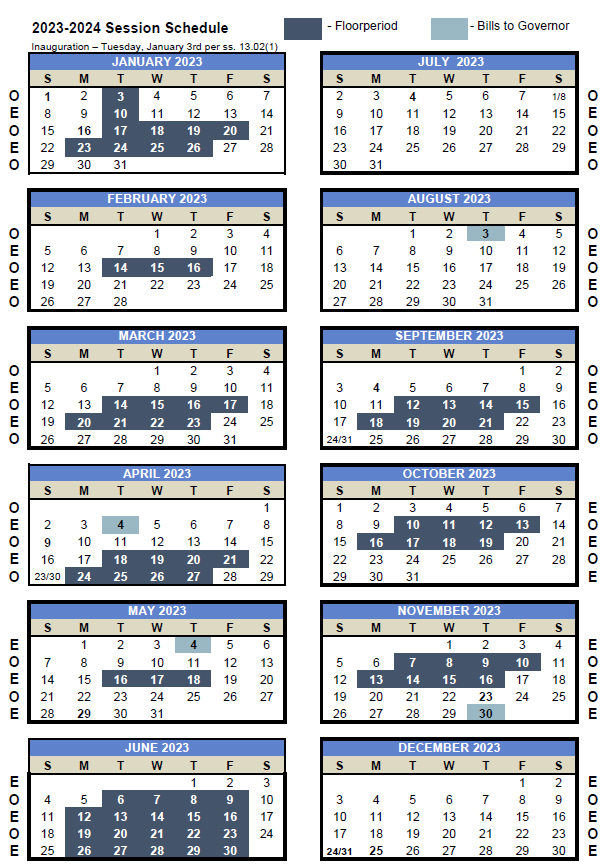Committee Information
Assembly Rules, Chapter 2 outlines committee operations. If interested in attending a committee, a good reference is A Citizen's Guide to Participation in the Wisconsin State Legislature. There are several different types of committee meetings (all open to the public):
- Public hearings are when committees meet to gather testimony and information on bills/proposals before the committee. Hearing slips are available at public hearings from the Sergeant's staff. The Sergeant's staff can also distribute any individual testimony provided to committee members (for most committees 20 copies is sufficient.) Hearing slips may be filled out to register (not speak) or speak for or against a proposal.
- Informational hearings are used to gather expert testimony and are usually limited to invited speakers.
- Executive sessions are when committee members take action on proposals before them. This is when committee members offer amendments, discuss changes to proposals, and take action/votes to forward bills to the full Assembly. There is no public testimony during executive sessions.
Things to know:
- It is a good idea to prepare (think about what you want to say) and practice comments ahead of time. Keep in mind that committees are there to gather information so it is a good idea not to repeat what others have said. Sharing your own experience and knowledge as it relates to the bill helps avoid repetition.
- After your testimony, committee members may ask you questions. Answer them to the best of your ability. (It is not appropriate to ask questions of the committee.)
- The committee needs to maintain an appropriate level of decorum, so that everyone has the opportunity to address the committee without intimidation. Please be respectful of everyone in the room; it is possible to passionately disagree while remaining courteous. In addition, applause, cheering, booing, waving signs, and other expressions of sentiment are not appropriate.
- It may take a while to testify, there may be other bills on the agenda and there could be others ahead of you to testify. Most committee chairs have the bill authors and other invited speakers testify first and will then rotate between people testifying for and against the proposal.
- For public hearings with high attendance time limits may be imposed to allow for more people to testify. Please respect limits to allow others to be heard.
- Committee members may come and go during a hearing. Often there are multiple hearings going on simultaneously.
- Smile! You may be on Wiseye.org which broadcasts many legislative hearings.


